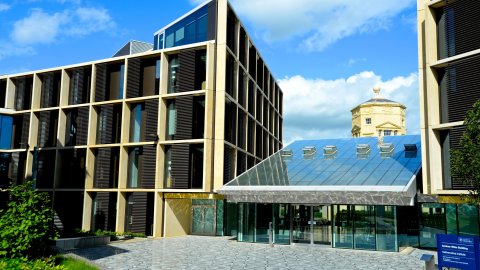14:00
Independent sets in random subgraphs of the hypercube
Abstract
Independent sets in bipartite regular graphs have been studied extensively in combinatorics, probability, computer science and more. The problem of counting independent sets is particularly interesting in the d-dimensional hypercube $\{0,1\}^d$, motivated by the lattice gas hardcore model from statistical physics. Independent sets also turn out to be very interesting in the context of random graphs.
The number of independent sets in the hypercube $\{0,1\}^d$ was estimated precisely by Korshunov and Sapozhenko in the 1980s and recently refined by Jenssen and Perkins.
In this talk we will discuss new results on the number of independent sets in a random subgraph of the hypercube. The results extend to the hardcore model and rely on an analysis of the antiferromagnetic Ising model on the hypercube.
This talk is based on joint work with Yinon Spinka.
Twisted eleven-dimensional supergravity and exceptional lie algebras
Abstract
I'll describe an interacting holomorphic-topological field theory in eleven dimensions defined on products of Calabi-Yau 5-folds with real one-manifolds. The theory describes a certain deformation of the cotangent bundle to the moduli of Calabi-Yau deformations of the 5-fold and conjecturally describes a certain protected sector of eleven-dimensional supergravity. Strikingly, the theory has an infinite dimensional global symmetry algebra given by an extension of the exceptional lie superalgebra E(5,10) first studied by Kac. This talk is based on joint work with Ingmar Saberi and Brian Williams.




